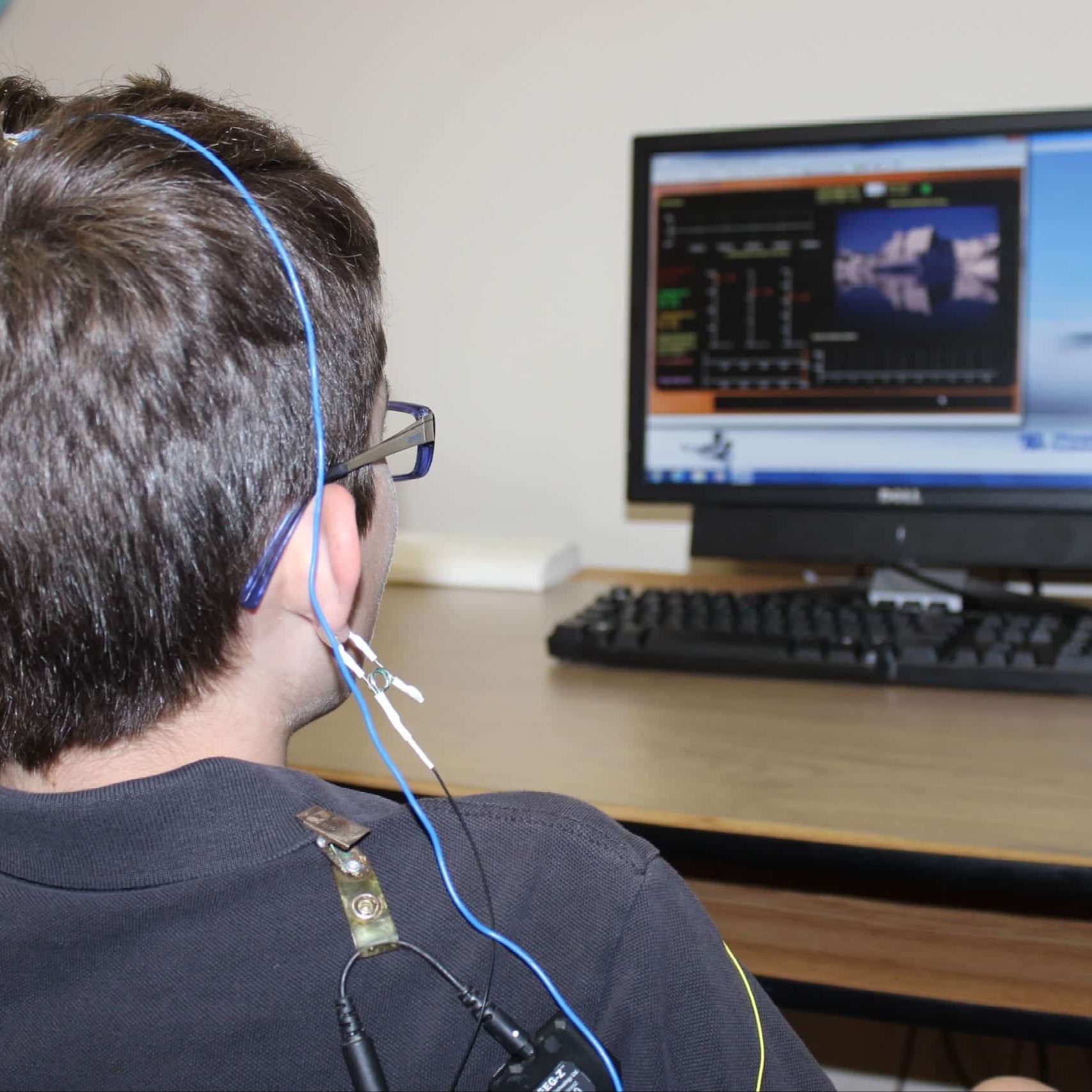Explore the many benefits
There are several research studies that have demonstrated the benefits of neurofeedback in treating depression, anxiety, ADD, insomnia, panic attacks, etc.
Neurofeedback therapy is commonly used to control symptoms of hyperarousal, including those associated with PTSD, panic disorders, insomnia and ADHD symptoms. A 2016 randomized control trial found that “Compared with the control group, neurofeedback produced significant PTSD symptom improvement in individuals with chronic PTSD.”
Traumatized individuals with PTSD that were included in the study, all of whom had not responded to at least six months of trauma-focused psychotherapy, were compared to a waitlist control group. At the end of the study, which included 24 sessions of neurofeedback (NF), the NF subjects were found to have statistically significant improvements in measures of affect regulation, identity impairment, abandonment concerns and tension reduction activities.
The researchers also point out that NF may be “particularly helpful for traumatized individuals who are too anxious, dissociated or dysregulated to tolerate exposure-based treatments.”
Neurofeedback is a personal trainer for your brain, specifically for a person who suffers from anxiety. Gently the brain is trained to operate out of a calmer place. The benefit of relieving anxiety conditions does not restrict itself to anxiety per se, but will influence the person’s entire life quality. The changes will reflect improved attention and focus of the person; emotional relationships will progress; and the person will relate differently with his or her perceived “self.”
Neurofeedback and Depression
While depressive episodes are often temporary and manageable with the help of therapy or medication, those treatments aren’t always effective and don’t lead to long-term relief. Neurofeedback helps with depressive episodes by regulating brain waves without side effects and making it easier to cope with negative thoughts. Over time, the therapy can help reduce the frequency of depressive episodes as well.
Neurofeedback Improves Attention and Focus
ADHD is one of the top reasons why people seek out neurofeedback services. The symptoms of ADHD include forgetfulness, difficulty staying organized or on task, difficulty following instructions or completing tasks, hyperactivity, and impulsivity.
Neurofeedback can actually help those suffering from these symptoms by retraining their brains to be able to focus better and improve their overall functioning. With regular sessions, neurofeedback can make a significant difference in how someone functions in everyday life, whether they are struggling with ADHD or a general lack of focus.
Neurofeedback Increases Emotional Stability
Neurofeedback is a form of therapy that can help people gain emotional stability. It is a non-invasive technique that uses electroencephalogram (EEG) technology to measure brain activity and provide feedback to the patient in real time. Through this repeated process, neurofeedback helps patients become aware of their own emotional states, allowing them to better regulate their emotions and reactions. Over time, patients can learn how to manage their feelings more effectively and respond appropriately in difficult situations.
Book & Gain the Benefits of Neurofeedback
Neurofeedback has the potential to revolutionize mental health treatment, offering a new approach for those who have not yet found lasting relief using traditional methods. By training brain regions to communicate differently, neurofeedback can address the symptoms of mental health issues at their source with few side effects. This is why we have chosen to make neurofeedback therapy a cornerstone of our practice, and why we have become a valuable resource for anyone looking for the benefits of neurofeedback therapy.




